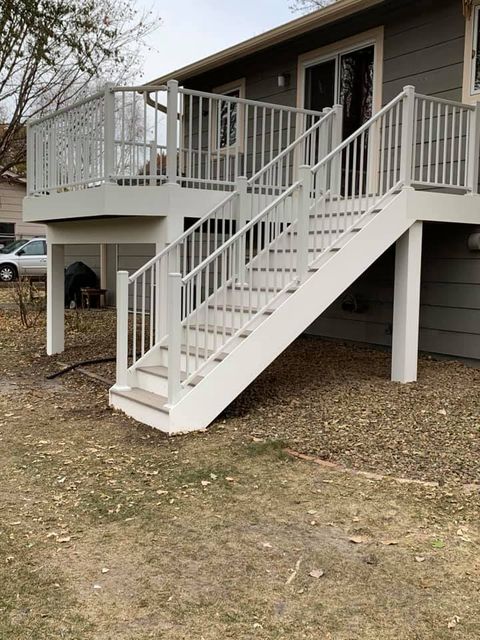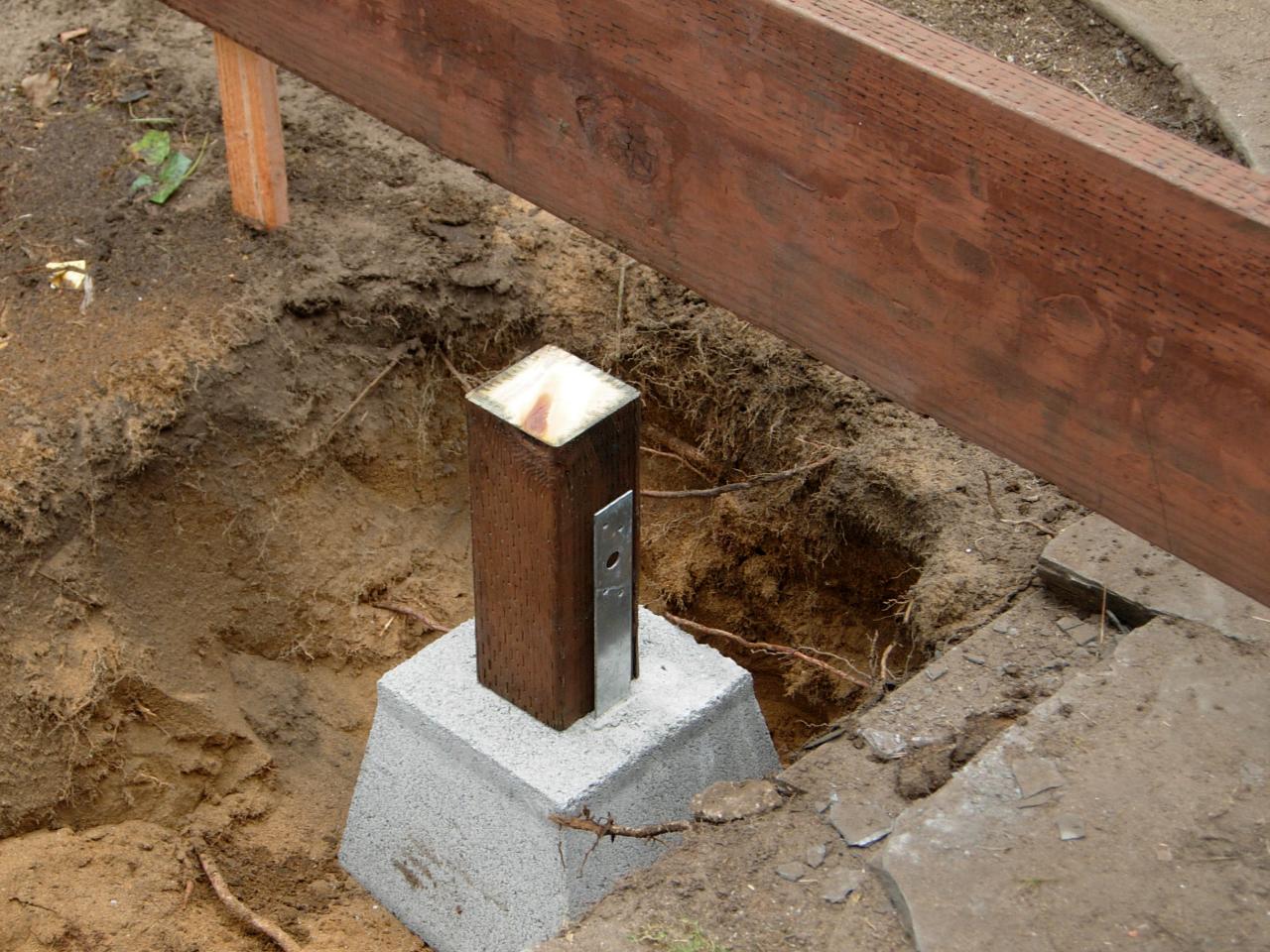Make Sure Security and Longevity With Properly Mounted Deck Grounds
Deck grounds might not be the most glamorous facet of deck construction, yet they play an important duty in making certain security and long life. In this discussion, we will check out the importance of correct deck grounds, aspects to consider during setup, various types of footings available, step-by-step installation overview, and upkeep suggestions for guaranteeing long-lasting grounds.

Importance of Proper Deck Grounds
Why are effectively mounted deck grounds crucial for the security and durability of your deck? The response depends on the essential function that deck grounds play in sustaining the weight of the whole framework. Deck grounds are the foundation on which the deck rests, moving the tons from the deck to the ground. When grounds are not appropriately mounted, it can result in a series of issues that jeopardize the security and long life of the deck.
Firstly, appropriately installed deck grounds distribute the weight of the deck uniformly, avoiding any uneven settling or sinking. This is specifically important in areas with unpredictable soil, as it helps to alleviate the risk of the deck changing or breaking down. Furthermore, well-installed grounds make sure that the deck remains level, stopping any type of architectural damage that can occur when a deck ends up being unequal.
Second of all, appropriately set up grounds offer a solid anchor for the deck, preventing extreme motion and sway. This helps to maintain the structural honesty of the deck, minimizing the threat of accidents or injuries. It likewise minimizes the wear and tear on the deck, enabling it to stand up to the components and routine usage for a longer amount of time.
Elements to Consider for Deck Ground Installment
When setting up deck grounds, there are numerous important variables to take into consideration for proper setup. Different soil types have various load-bearing abilities, so it is vital to conduct a dirt examination to make sure the grounds can support the weight of the deck and its passengers. By taking into account these elements, you can guarantee the correct installation of deck grounds and take pleasure in a secure and resilient deck.
Kinds of Deck Footings to Pick From
There are several various sorts of deck grounds offered for you to select from. Each type has its very own benefits and drawbacks, so it's necessary to consider your particular demands and the problems of your deck before making a decision.
One typical sort of deck ground is the concrete footing. This involves excavating openings in the ground and pouring concrete into them to produce a solid structure. Concrete footings are long lasting and give excellent security, making them suitable for decks in areas with difficult soil conditions or high wind lots.
Another alternative is the helical pier ground, which consists of a steel shaft with helical plates that are screwed into the ground. These footings are fast to mount and can be used in various dirt kinds, consisting of sandy or clay soils. They are likewise adjustable, permitting very easy leveling of the deck.
Sonotube grounds are one more preferred option. These grounds are produced by placing a cardboard tube in a hole and loading it with concrete. Sonotube grounds are reasonably simple to set up and offer adequate security for smaller sized decks or in locations with less requiring dirt problems.

When selecting the kind of deck footing, it's crucial to take into consideration variables such as dirt problems, deck size and weight, local structure codes, and individual preferences. By selecting the appropriate ground kind, you can make sure the stability and durability of your deck.
Step-by-Step Guide for Setting Up Deck Footings

Determine the location: Start by marking the exact setting of each ground utilizing stakes and string (Deck Footings). Take into consideration any kind of neighborhood structure codes or guidelines regarding trouble distances
Dig the holes: Make use of an article opening digger or an auger to dig the holes for the grounds. Normally, a depth of at least 36 inches is recommended for security.
Level the holes: Ensure that the bases of the openings are degree (Deck Footings). This can be accomplished by utilizing a level or a straight board throughout the top of the holes
Include gravel: Location a layer of crushed rock at the bottom of each opening to improve water drainage and avoid the ground from sinking right into the soil over time.
Put the footing types: Put the ground develops right into the openings, guaranteeing they are centered and degree. Usage stakes to secure them in position.
Mix and pour concrete: Follow the instructions on the concrete mix bag to prepare the concrete. Pour the concrete right into the footing forms, filling them totally.
Smooth the Learn More Here surface: Make use of a trowel to smooth the surface area of the concrete and get rid of any kind of air pockets. Permit the concrete to treat according to the manufacturer's directions.
Maintenance Tips for Long-lasting Deck Grounds
Correct upkeep is vital for guaranteeing the long life and stability of deck footings. By regularly examining and preserving your deck grounds, you can avoid damage and prospective safety and security risks. One vital facet of maintenance is to routinely look for any type of indicators of degeneration, such as cracks or movement in the footings. If you notice any issues, it is essential to address them immediately to stay clear of further damages. Click This Link
Regular cleansing is additionally crucial for keeping deck footings. Plants, particles, and dirt can collect around the footings, which can cause moisture buildup and decay. Cleansing the grounds frequently, utilizing a brush or a pressure washer, can assist avoid these issues and expand the life expectancy of your deck.
In addition to cleaning, it is very important to maintain the area around the footings free from any kind of obstructions. Stay clear of stacking things against the grounds or enabling plants to grow too close to them. These obstructions can trap wetness and create the footings to deteriorate gradually.
Last but not least, regular resealing of the footings is suggested to secure them from dampness and other environmental aspects. Using a water resistant sealer can assist avoid water damage and prolong the lifespan of the grounds.
Conclusion
Finally, appropriate installment of deck grounds is vital for making certain security and long life of your deck. Variables such as dirt type, load ability, and neighborhood structure codes require to be taken into consideration when selecting the appropriate kind of deck footings. Complying with a detailed guide for setup and useful reference routine maintenance will certainly aid to make certain the footings continue to be resilient and resilient.
In this conversation, we will discover the relevance of correct deck footings, variables to consider during installation, various types of grounds offered, detailed installation overview, and upkeep suggestions for making sure resilient footings. Deck grounds are the foundation on which the deck relaxes, transferring the lots from the deck to the ground.One typical type of deck ground is the concrete footing. Place the footing kinds: Put the ground forms right into the holes, guaranteeing they are centered and degree.In conclusion, appropriate installation of deck grounds is essential for making certain stability and long life of your deck.